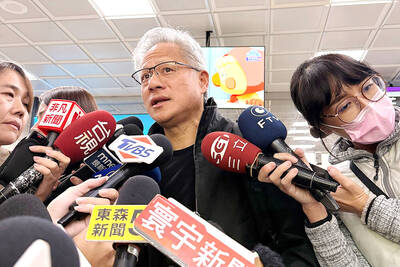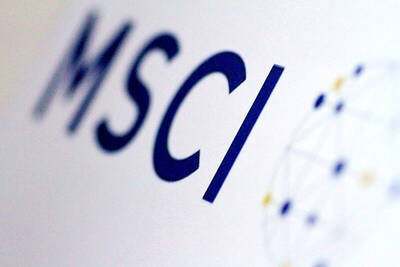SiPix Imaging Inc (鑼洤), an electronic paper subsidiary of the world’s No. 3 panel maker, AU Optronics Corp (友達光電), yesterday said it would ship a small volume of color e-paper displays in the second half of next year, ahead of most rivals.
The first color e-paper displays are expected to be used in electronic readers, magazines and newspapers, company president Andrew Tseng (曾旭文) told reporters on the sidelines of a workshop held by market researcher Topology Research Institute (拓墣產業研究所).
Like most of its competitors, SiPix currently only offers black-and-white e-paper displays, produced in the US.
“Making colored electronic paper displays is our top priority,” Tseng said. “We are in talks with customers to supply colored displays ... as [color] would encourage advertisers to place ads on [electronic] publications, which then would be able to provide more content [to readers] for free.”
After a breakthrough by AU Optronics in thin-film-transistor panels, SiPix expects to produce color displays next year, Tseng said, while rivals such as Prime View International Co (元太科技) may take two or three years to achieve the same goal.
Prime View is the world’s biggest supplier of e-paper display modules, with Amazon.com, Inc and Sony Corp among its customers.
Prime View makes e-paper displays using technology from E Ink Corp, which Prime View plans to acquire by the end of the year.
AU Optronics is scheduled to ship its first e-paper display modules to customers this quarter.
As a result of rising demand, SiPix chairman Liu Chun-ting (劉軍廷) last week said the company would boost production at its US plant next quarter and build a factory in Taiwan in the first half of next year.
“We are trying to increase capacity as much as possible, [to cope with demand],” Tseng said.
The e-paper market is expected to grow to US$832 million in 2012 in terms of revenue, up from US$2 million this year, Topology’s figures showed.

PERSISTENT RUMORS: Nvidia’s CEO said the firm is not in talks to sell AI chips to China, but he would welcome a change in US policy barring the activity Nvidia Corp CEO Jensen Huang (黃仁勳) said his company is not in discussions to sell its Blackwell artificial intelligence (AI) chips to Chinese firms, waving off speculation it is trying to engineer a return to the world’s largest semiconductor market. Huang, who arrived in Taiwan yesterday ahead of meetings with longtime partner Taiwan Semiconductor Manufacturing Co (TSMC, 台積電), took the opportunity to clarify recent comments about the US-China AI race. The Nvidia head caused a stir in an interview this week with the Financial Times, in which he was quoted as saying “China will win” the AI race. Huang yesterday said

Nissan Motor Co has agreed to sell its global headquarters in Yokohama for ¥97 billion (US$630 million) to a group sponsored by Taiwanese autoparts maker Minth Group (敏實集團), as the struggling automaker seeks to shore up its financial position. The acquisition is led by a special purchase company managed by KJR Management Ltd, a Japanese real-estate unit of private equity giant KKR & Co, people familiar with the matter said. KJR said it would act as asset manager together with Mizuho Real Estate Management Co. Nissan is undergoing a broad cost-cutting campaign by eliminating jobs and shuttering plants as it grapples

The Chinese government has issued guidance requiring new data center projects that have received any state funds to only use domestically made artificial intelligence (AI) chips, two sources familiar with the matter told Reuters. In recent weeks, Chinese regulatory authorities have ordered such data centers that are less than 30 percent complete to remove all installed foreign chips, or cancel plans to purchase them, while projects in a more advanced stage would be decided on a case-by-case basis, the sources said. The move could represent one of China’s most aggressive steps yet to eliminate foreign technology from its critical infrastructure amid a

MORE WEIGHT: The national weighting was raised in one index while holding steady in two others, while several companies rose or fell in prominence MSCI Inc, a global index provider, has raised Taiwan’s weighting in one of its major indices and left the country’s weighting unchanged in two other indices after a regular index review. In a statement released on Thursday, MSCI said it has upgraded Taiwan’s weighting in the MSCI All-Country World Index by 0.02 percentage points to 2.25 percent, while maintaining the weighting in the MSCI Emerging Markets Index, the most closely watched by foreign institutional investors, at 20.46 percent. Additionally, the index provider has left Taiwan’s weighting in the MSCI All-Country Asia ex-Japan Index unchanged at 23.15 percent. The latest index adjustments are to